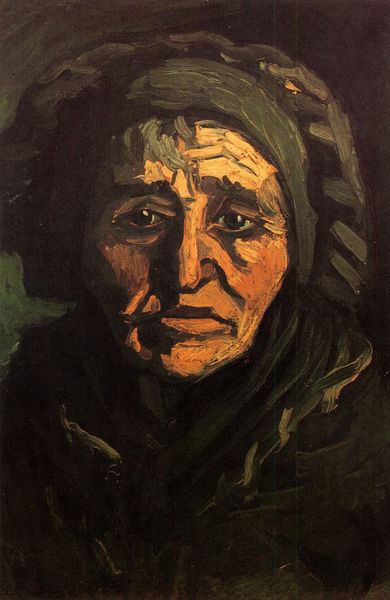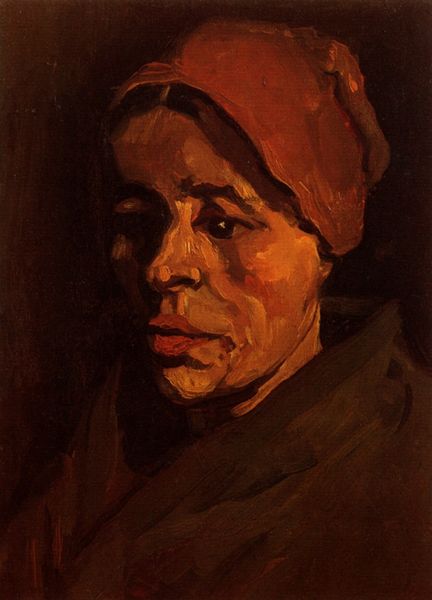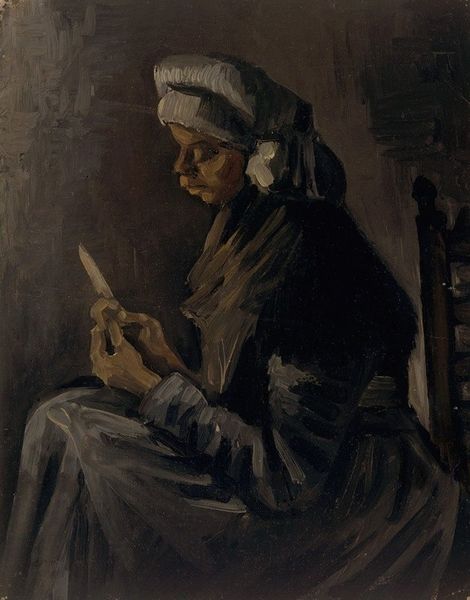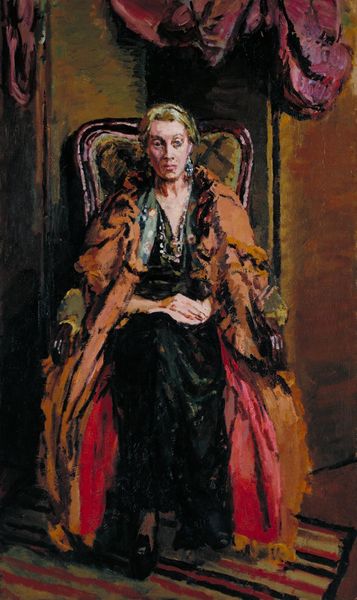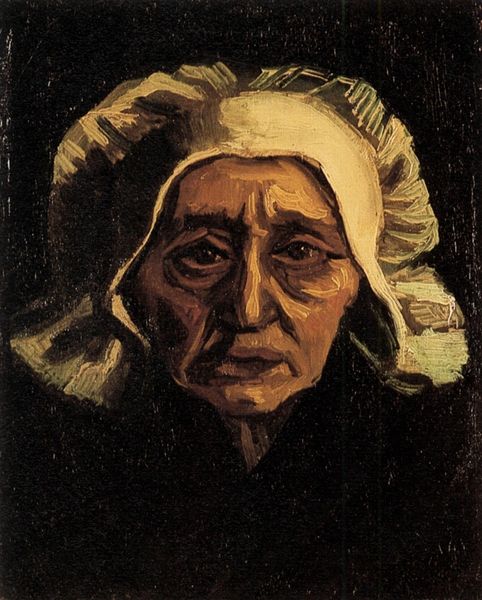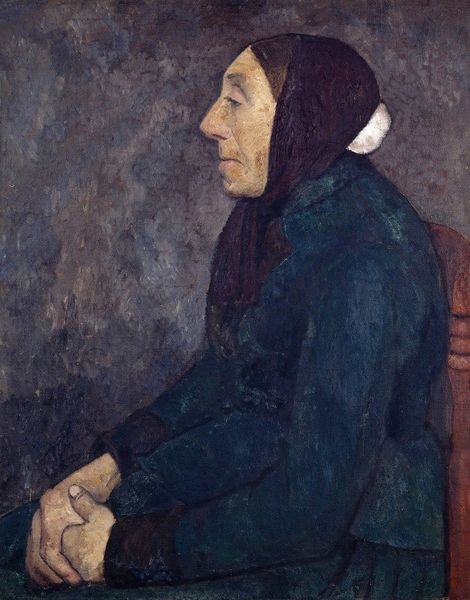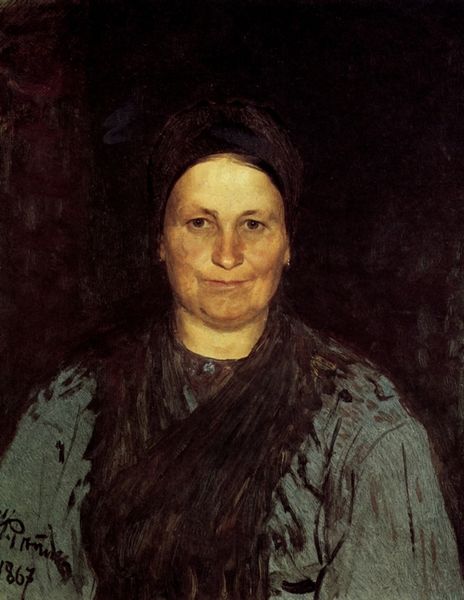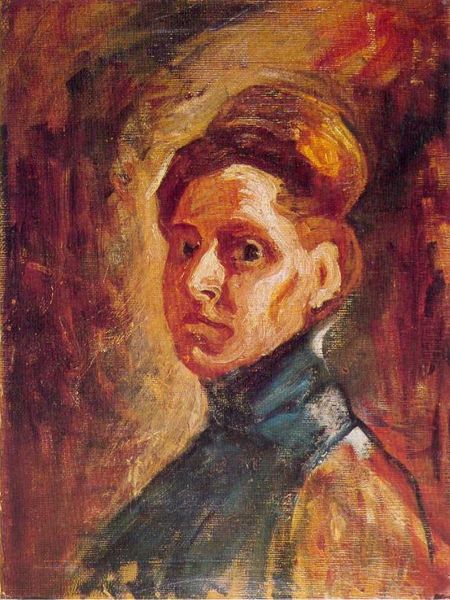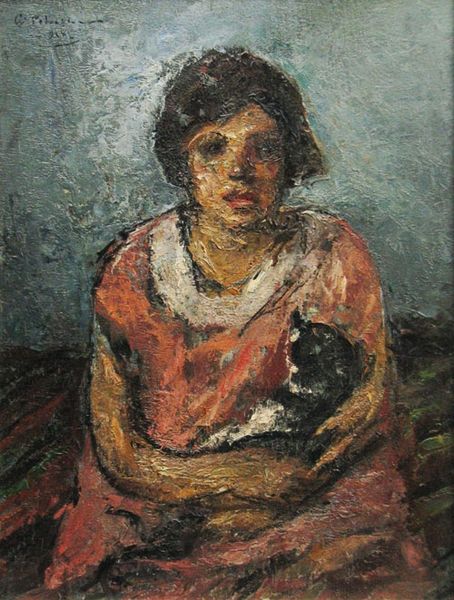
painting, oil-paint
#
portrait
#
painting
#
oil-paint
#
oil painting
#
ashcan-school
#
genre-painting
#
realism
Dimensions: 60.96 x 76.2 cm
Copyright: Public domain
Curator: We’re looking at George Luks's "Old Woman", an oil painting reflecting the Ashcan School's dedication to depicting everyday life. What's your initial reaction to the piece? Editor: The muted tones create a rather somber atmosphere, don't you think? It’s primarily the textures that pull me in—the rough brushstrokes that suggest both the subject’s age and the working-class context. Curator: Absolutely. Luks's choice to portray this woman speaks volumes about his social commentary. The Ashcan School sought to capture the unvarnished realities of urban life, offering a voice to those often overlooked, especially considering gendered implications of poverty and aging. Editor: I'm interested in her clothing. It’s clearly well-worn, yet she wears what seems like a scarf or shawl, a textile suggesting a sense of care, despite the material conditions she finds herself in. The very act of painting her is a labor of sorts. Curator: Yes, and that connects with larger issues of visibility and representation. Who gets to be seen, who has a story worth telling, and what narratives are deemed important. Her being here counters certain cultural norms, doesn't it? Editor: Precisely. Considering the cost and availability of paints and canvas at the time, the artist’s very access speaks to a level of privilege, allowing him to render her image for posterity. How complicit is he, do you suppose? Curator: I think there’s an argument to be made that any act of representation carries an element of power dynamics. The key is acknowledging that and interrogating what that representation seeks to achieve or dismantle, as this work confronts class prejudices, certainly. Editor: It also challenges the then-current standards of portraiture, which tended toward idealized versions of wealthy patrons, but let's consider also how labor shapes our perceptions of value and worth, both in art and in life. Curator: Precisely, because these images allow us to reimagine the standards of artistic subject matter but also consider the economic drivers behind this change. Art becomes a voice for the working classes, and this moves culture into new directions. Editor: Seeing the dignity in her worn clothing, and that labor expressed through visible brushstrokes allows us a chance to reconsider the meaning inherent to both artistic production and our treatment of aging populations. It's a heavy message for such a small painting, but one well worth contemplating.
Comments
No comments
Be the first to comment and join the conversation on the ultimate creative platform.
